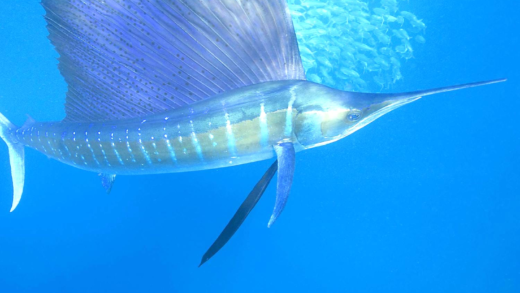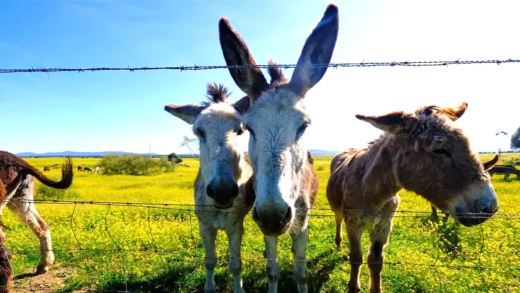The San Diego Zoo stands out as the biggest zoo in the U.S., featuring over 3,500 animals and unique conservation efforts. Other large zoos, such as the Bronx and Houston Zoos, also offer diverse wildlife experiences and educational programs. Each zoo has its own unique features, contributing to wildlife education and conservation awareness.
Biggest Zoo in the U.S.: Meet the San Diego Zoo
The biggest zoo in the U.S. is the renowned San Diego Zoo. Located in San Diego, California, this zoo spans over 100 acres and is home to more than 3,500 animals representing over 650 species. Established in 1916, it has become a leading force in wildlife conservation and education.
The significance of the San Diego Zoo lies in its commitment to conservation efforts and public education about wildlife. Visitors can explore a variety of exhibits that showcase animals in environments that mimic their natural habitats. This zoo not only entertains but also informs the public about the importance of wildlife preservation.
With its cutting-edge enclosures and diverse animal populations, the San Diego Zoo provides a unique experience for guests. It’s more than just a place to see animals; it’s a hub for conservation initiatives aimed at protecting endangered species worldwide.
Unique Features of the San Diego Zoo: What Sets It Apart?
The San Diego Zoo is known for several unique features that distinguish it from other large zoos in the U.S. First and foremost, its innovative “Zoo Safari Park” allows visitors to engage with wildlife in a natural setting. This experience provides a deeper understanding of animal behavior and their ecosystems.
Another standout feature is the zoo’s extensive botanical collection, which includes over 700,000 plants. These lush landscapes not only enhance the beauty of the zoo but also create a more authentic environment for the animals. The integration of plant life helps to educate visitors about the symbiotic relationship between flora and fauna.
Additionally, the San Diego Zoo emphasizes sustainability. It incorporates solar energy, water conservation techniques, and recycling programs to minimize its environmental footprint. This commitment to green practices reflects a broader trend in wildlife education at zoos, focusing on the importance of conservation.
Overall, the unique features of the San Diego Zoo—its innovative exhibits, extensive botanical gardens, and dedication to sustainability—make it a must-visit destination for anyone interested in wildlife and conservation.
Diversity of Wildlife at the San Diego Zoo
The biggest zoo in the U.S. boasts a staggering number of animals and species. With over 3,500 animals representing more than 650 species, the San Diego Zoo offers a glimpse into the diverse wildlife of our planet. This incredible variety includes mammals, birds, reptiles, amphibians, and numerous species of fish. Visitors can see everything from majestic elephants to vibrant tropical birds, making it a true paradise for animal lovers.
Some of the most notable animals at the San Diego Zoo include:
- Giant pandas
- Polar bears
- Koalas
- Asian elephants
- Jaguar
This impressive collection not only provides entertainment but also serves as an educational platform. Each exhibit is designed to mimic the animal’s natural habitat, allowing guests to appreciate the unique adaptations that each species has developed.
Conservation Initiatives at the San Diego Zoo
The San Diego Zoo is not just a place to see animals; it plays a crucial role in wildlife conservation efforts. The zoo engages in various programs aimed at protecting endangered species and preserving their habitats. Its commitment to conservation can be seen through:
- Breeding programs for endangered species, such as the California condor and the Arabian oryx.
- Research initiatives that help understand animal behavior and health, contributing to global conservation strategies.
- Collaboration with international organizations to support wildlife conservation projects worldwide.
Additionally, the zoo actively participates in habitat restoration projects and advocates for sustainable practices. By educating the public about the threats facing wildlife, the San Diego Zoo inspires visitors to become advocates for conservation. This dedication to protecting wildlife not only enhances the zoo’s reputation but also underscores its significance in the global conservation community.
Other Large Zoos in the U.S.: A Brief Overview
In addition to the San Diego Zoo, several other notable zoos across the United States offer incredible experiences for animal lovers. These zoos not only house a diverse range of species but also contribute significantly to wildlife conservation and education. Here are some prominent examples:
- Brookfield Zoo (Illinois): Known for its naturalistic habitats, this zoo features over 450 species and emphasizes animal welfare.
- Bronx Zoo (New York): One of the largest metropolitan zoos in the world, it spans 265 acres and is home to around 6,000 animals.
- Houston Zoo (Texas): This zoo focuses on conservation efforts and houses more than 6,000 animals, including endangered species.
- Los Angeles Zoo (California): With over 1,400 animals, this zoo is committed to education and conservation programs.
Each of these zoos offers unique experiences and educational opportunities for visitors, highlighting the importance of wildlife preservation.
Unique Features of These Zoos: What Makes Them Stand Out?
While all large zoos share the common goal of educating the public and conserving wildlife, they each have unique features that set them apart:
- Brookfield Zoo: Offers a “Zoo on the Go” program that brings wildlife education to communities.
- Bronx Zoo: Features a vast African Plains exhibit where animals roam in expansive settings.
- Houston Zoo: Implements cutting-edge sustainability practices, including a large solar panel installation.
- Los Angeles Zoo: Focuses on biodiversity and hosts the “Zoo 360” initiative that allows animals to move freely in large, interconnected enclosures.
These unique aspects enhance the visitor experience while promoting awareness of animal conservation and environmental issues.
Wildlife Education at Zoos: Learning from Animals
Wildlife education is a critical component of zoos across the U.S. They serve as platforms for public learning about wildlife conservation. At these zoos, visitors can engage in:
- Interactive exhibits that teach about animal behavior and habitats.
- Educational programs for school groups, which emphasize the role of wildlife in ecosystems.
- Workshops and seminars on conservation topics, led by experts in the field.
Through these initiatives, zoos inspire visitors to understand the importance of protecting wildlife and their habitats.
Popular Animals to See at These Zoos: Fan Favorites
When visiting large zoos, certain animals tend to capture the hearts of visitors. Some of the most popular animals across U.S. zoos include:
- Giraffes, known for their tall stature and gentle nature.
- Red pandas, which are adored for their playful demeanor.
- Sea lions, often seen performing tricks and interacting with trainers.
- Wolves, which fascinate many due to their social behavior.
These animals, among others, not only draw crowds but also play a significant role in educating the public about their species and the need for conservation.





Comments are closed.